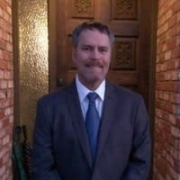We're not using AirMagnet primarily for predictive analysis—it's mostly checking signals in real-time. The vast majority of our usage is in hotels or small and medium-sized businesses. Every time they make changes or have a problem, we run through them. Occasionally we work with large ones, like the 1.2 million-square-foot Walgreens facility at their main distribution center in Madison. That was much larger, but it's rare.
After AirMagnet is installed on the system, we can survey the average three-story hotel in 45 minutes. It probably takes three or four hours to finish the analysis and write up a report. The general managers at a hotel don't really care about much of the information we provide. They only want to know what the problem is and see the heat map showing where the dead zones are. We tell them if there's a bottleneck and have the metrics to back us up if anybody asks.
We typically run settings at -65 dB as the low end and -25 dB for the signal-to-noise ratio. It's a little better than the industry standard, which is -67 dB and -20 dB, but it ensures we have top-of-the-line signal coverage when we're doing the survey. My company does engineering and manufacturing, but there are 25 of us in the IT department, and three are level five. We can do anything and assist if needed.
Most of our guys are level three, so they're good to run around and do stuff on their own. Sometimes, they might need some help with some higher-end stuff. They're doing a lot of intermediate work, such as running cables or fiber optics, so they don't typically have the higher-end tools that the three of us use, like the nXG and OptiView XG tablets. They have a lot of cable testers, including some higher-end ones.
If they're assisting us or going out to do a quick survey for us, we usually will log into their laptop, set it up and make sure that everything's calibrated properly for them. After everything's calibrated and set up, they have no problems doing the survey themselves. I'd like some of them to get a little bit better at it, but a lot of that comes down to how many times we are contracted each year to perform heat maps and pull metrics for facilities. Usually, that's only seven to 15 times a year. More often than not, the three of us with all the tools can take care of those jobs on our own.




